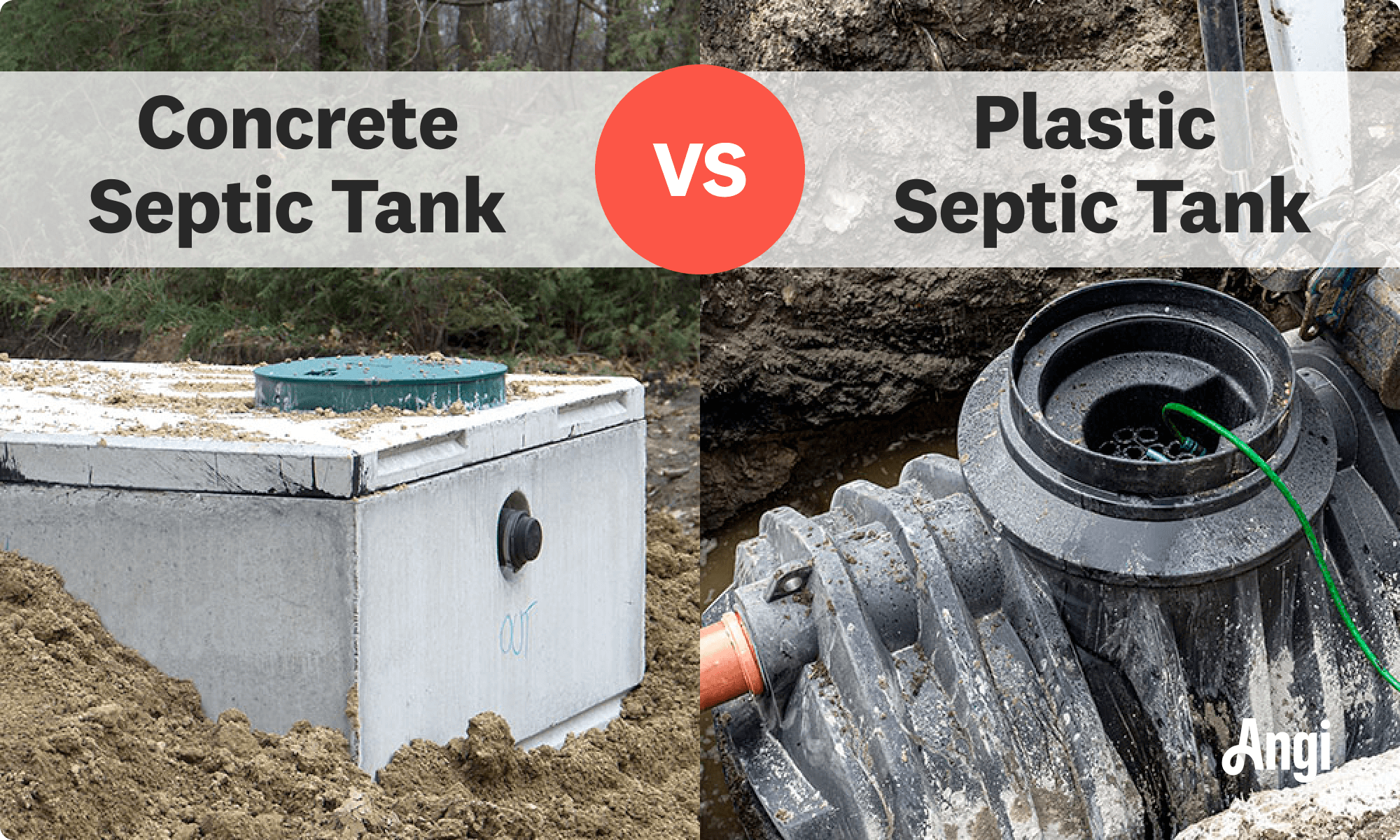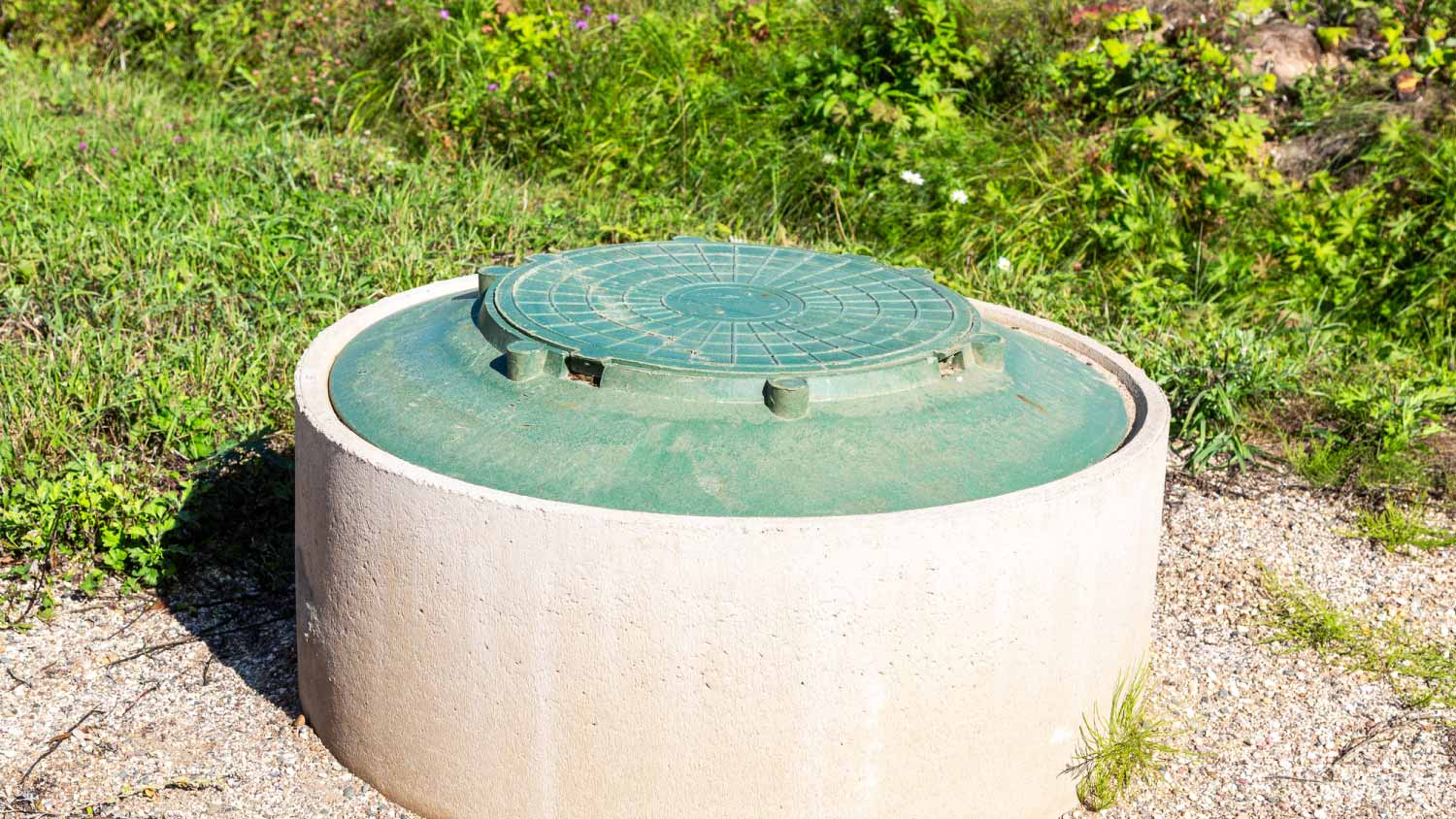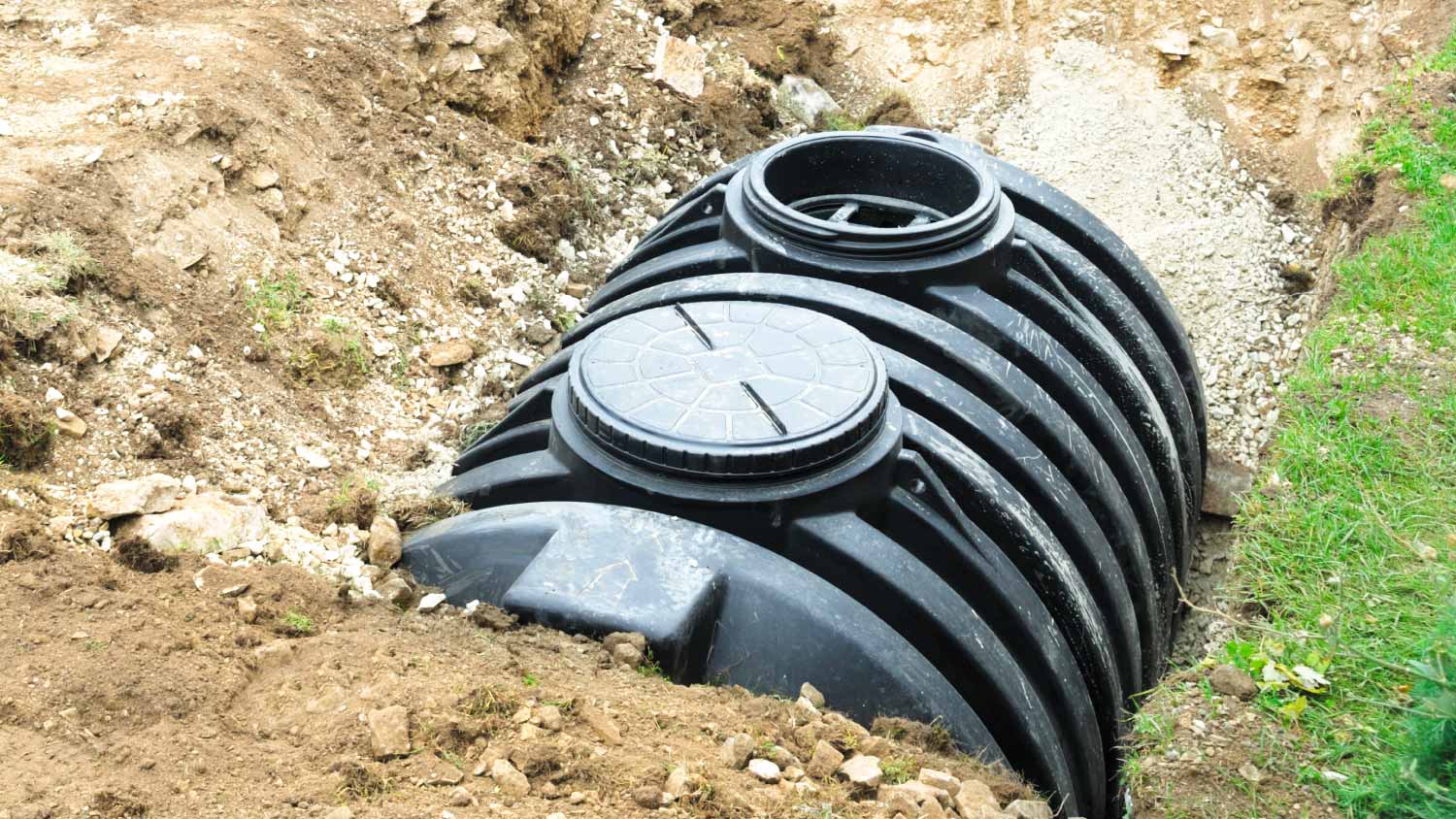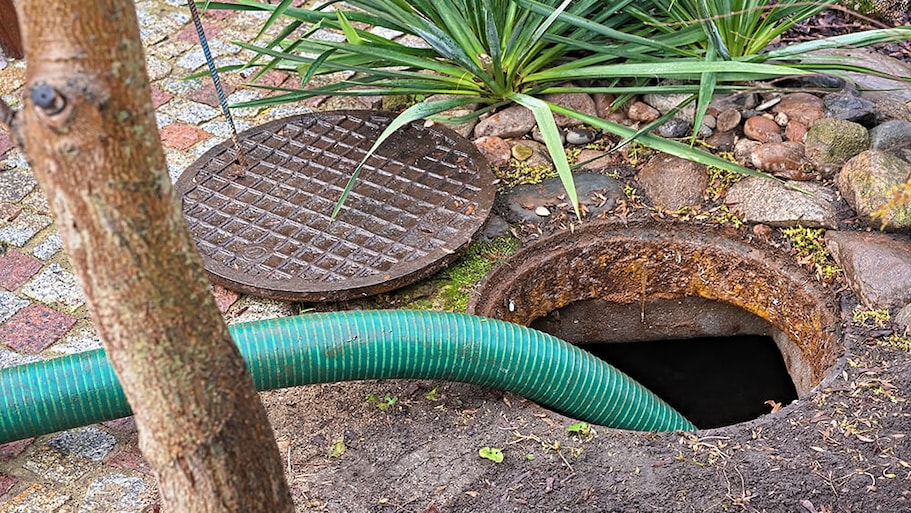What’s the Difference Between Concrete and Plastic Septic Tanks?
Know before you, well, go


Concrete septic tanks are longer-lasting but more costly than plastic tanks.
Plastic tanks are easier to install and maintain than concrete.
Concrete tanks work in all conditions, while plastic tanks do not.
Plastic costs $500 to $2,000 on average, while concrete runs $700 to $2,000.
Deciding between a concrete or plastic septic tank comes down to cost, longevity, maintenance needs, capacity, and potential zoning restrictions. While concrete tanks are more versatile regarding sizes and functionality, plastic ones cost less. However, long-term consideration is also necessary because choosing either one involves a significant investment. Here’s what you need to know when considering a concrete versus a plastic septic tank for your home.
Concrete vs Plastic Septic Tanks: Key Differences

Concrete and plastic septic tanks work the same way to produce the same results. However, that's where much of their similarities end. Concrete septic tanks last longer, are more durable, and can have larger capacities, but they cost more than plastic ones. On the other hand, plastic tanks are easier to install and repair if necessary.
What Is a Concrete Septic Tank?

A septic tank treats your home or business wastewater where a municipal sewer connection isn't available. They're environmentally friendly devices that employ beneficial bacteria to break down waste that would otherwise go to a centralized treatment plant.
A concrete septic tank is precisely as the name suggests. Made of concrete, these tanks can last for 50 years and can stand up to environmental changes and challenges. However, their durability comes at a cost.
| Pros | Cons |
|---|---|
| Allowed everywhere | Cost |
| Long lifespan | Weight |
| Durable | Porosity |
Best for:
Homes with multiple residents that need a large-capacity solution
Homeowners who live in wet locations where plastic septic tanks may not be allowed
Homeowners seeking the longest possible lifespan from their system
Pros of Concrete Septic Tanks
Because concrete is a durable material, septic tanks made of it are also highly durable and can last for 50 years or more with proper maintenance.
Additionally, their excessive weight doesn't allow them to float or move when installed in areas with high groundwater tables, which means they're acceptable for use in any location.
Cons of Concrete Septic Tanks
Concrete septic tanks cost more to purchase and install than private wastewater systems made of other materials. Because of their weight and bulk, they're challenging and costly to transport and install. Installation requires several laborers and special equipment, which drives up the costs.
Additionally, because concrete is porous, special waterproofing or protection is often necessary, especially in acidic soils, to keep them watertight for many years. This also increases the cost and complexity of installing them.
What Is a Plastic Septic Tank?

A plastic septic tank is virtually the same as a concrete one in most ways, except for its material and appearance. Plastic or poly septic tanks are more lightweight than concrete ones, making them easy and inexpensive to install. However, plastic septic tanks have some limitations that require consideration.
| Pros | Cons |
|---|---|
| Cost | Size limitations |
| Installation ease | Location restrictions |
| Corrosion resistance | Durability |
Best for:
Homeowners looking to save on septic tank installation costs
Homes in areas where highly acidic soil exists
Homes with smaller families that don't need a high-capacity septic system
Pros of Plastic Septic Tanks
Because of their light weight, plastic septic tanks are easier to install. Fewer workers are required, and special hauling and installation equipment is not needed. These factors reduce the overall installation cost. Plastic is also less prone to acidic soil corrosion than concrete, meaning less dependence on special linings or other protection.
Cons of Plastic Septic Tanks
Because plastic is a less durable material than concrete, the size of plastic septic tanks is limited. This means that you will need to pump out your septic system more often if you choose a smaller tank than a larger, concrete version.
Additionally, because plastic tanks weigh less than concrete, they can float out of position in high water table conditions. For this reason, some municipalities restrict the use of poly tanks.
Concrete vs. Plastic Septic Tanks
Consider the following factors to decide if a plastic or concrete tank is the best option for your home's needs. A local septic tank company is an excellent resource for better understanding your home's specific septic needs and will be essential at installation time.
Price: Plastic
The cost to install a septic system is highly variable based on multiple factors. However, plastic tanks cost less to purchase and install than concrete versions due to their lower weight, maneuverability, and lesser need for specialized equipment. On average, plastic costs $500 to $2,000, while concrete averages $700 to $2,000.
Legality: Concrete
While concrete septic tanks enjoy nearly universal approval for residential use, plastic septic tanks aren't allowed in some municipalities because they tend to float in areas with excessive groundwater.
Durability: Concrete
Concrete's superior durability means homeowners can be less concerned about ground movement or soil pressure when it comes to their septic systems. Plastic septic tanks could shift, move, or react to impacts, causing costly damage, while concrete tanks won't budge under similar conditions.
Ease of Installation: Plastic
While installing any septic system for the first time requires extensive groundwork, once complete, physically putting a plastic septic system into the ground is possible with just a couple of workers and little to no special equipment, making it the clear winner regarding installation ease.
Ease of Repair: Plastic
If your septic tank suffers damage, plastic tanks are easier to repair than concrete tanks. A plastic welder can often do the trick, while repairing a concrete tank requires special tools and skills, if it is even possible.
Maintenance: Concrete
Concrete septic tanks are often larger than their plastic counterparts. This means that you can pump out your tank less frequently, which reduces the overall cost of maintaining them.
Length of Life: Concrete
Concrete septic tanks have 40- to 50-year lifespans with proper maintenance. Compared to plastic tanks that last an average of between 30 and 40 years, concrete is the clear winner in the lifespan category.
Frequently Asked Questions
How deep your septic system needs to be into the ground depends on several factors. In extremely cold environments, the tank needs to rest below the maximum frost line, which can be up to six or eight feet deep. The standard burying depth for most systems is between a few inches and four feet below ground level. Depth can also depend on the slope of the landscaping and other property variables.
If your septic tank is still within its expected lifespan and you need to relocate it on your property, it's possible to do so. However, because the task is so labor-intensive and costly, most homeowners simply choose to abandon the old tank if possible and install a new system in the new location. In either case, hiring a professional installation company will be necessary for the job.















